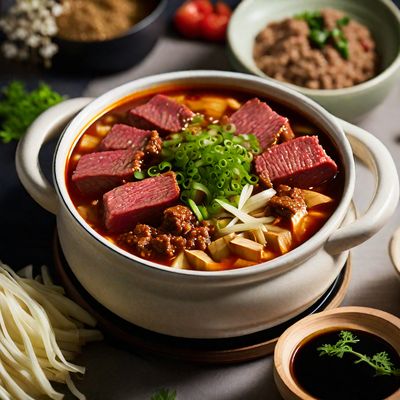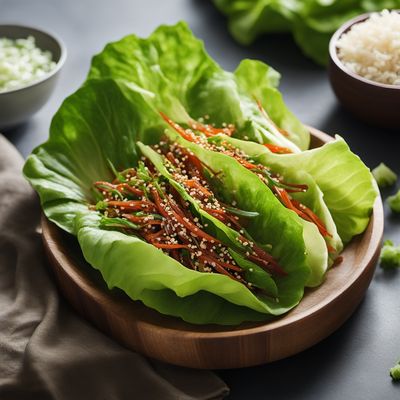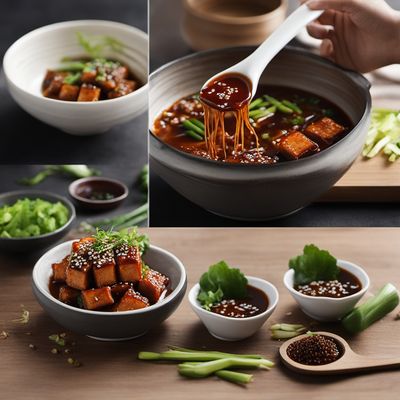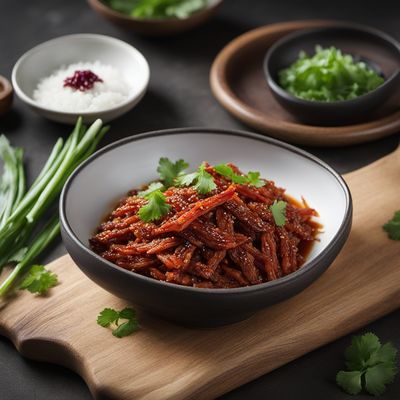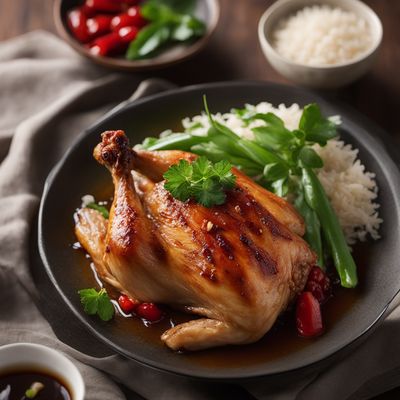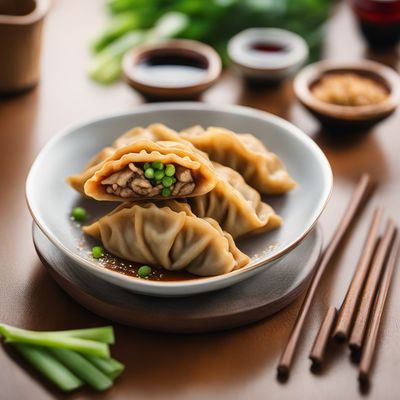
Recipe
Chinese-style Budae Jjigae
Spicy and Savory Chinese Hot Pot
4.8 out of 5
In Chinese cuisine, hot pot dishes are beloved for their communal dining experience and bold flavors. This Chinese-style Budae Jjigae takes inspiration from the Korean original, infusing it with traditional Chinese ingredients and spices. The result is a spicy and savory hot pot that will warm your soul and satisfy your taste buds.
Metadata
Preparation time
20 minutes
Cooking time
25 minutes
Total time
45 minutes
Yields
4 servings
Preparation difficulty
Medium
Suitable for
Omnivore, Gluten-free, Dairy-free, Nut-free, Low-carb
Allergens
Soy, Wheat
Not suitable for
Vegan, Vegetarian, Paleo, Keto, Halal
Ingredients
While the Korean Budae Jjigae typically includes ingredients like kimchi, spam, and ramen noodles, this Chinese adaptation incorporates Chinese sausages, tofu, and a variety of fresh vegetables. The seasonings are also adjusted to include Chinese spices like Sichuan peppercorns and chili bean paste, giving it a distinct Chinese flavor profile. We alse have the original recipe for Budae jjigae, so you can check it out.
-
200g (7 oz) Chinese sausages, sliced 200g (7 oz) Chinese sausages, sliced
-
200g (7 oz) boneless chicken thighs, thinly sliced 200g (7 oz) boneless chicken thighs, thinly sliced
-
200g (7 oz) firm tofu, cubed 200g (7 oz) firm tofu, cubed
-
100g (3.5 oz) shiitake mushrooms, sliced 100g (3.5 oz) shiitake mushrooms, sliced
-
1 cup napa cabbage, chopped 1 cup napa cabbage, chopped
-
1 cup bok choy, chopped 1 cup bok choy, chopped
-
1 cup bean sprouts 1 cup bean sprouts
-
4 cups chicken or vegetable broth 4 cups chicken or vegetable broth
-
2 tablespoons chili bean paste 2 tablespoons chili bean paste
-
1 tablespoon soy sauce 1 tablespoon soy sauce
-
1 tablespoon sesame oil 1 tablespoon sesame oil
-
1 tablespoon minced garlic 1 tablespoon minced garlic
-
1 teaspoon Sichuan peppercorns 1 teaspoon Sichuan peppercorns
-
1 teaspoon sugar 1 teaspoon sugar
-
Salt to taste Salt to taste
-
Cooked rice for serving Cooked rice for serving
Nutrition
- Calories (kcal / KJ): 350 kcal / 1465 KJ
- Fat (total, saturated): 20g, 6g
- Carbohydrates (total, sugars): 15g, 5g
- Protein: 25g
- Fiber: 4g
- Salt: 2g
Preparation
-
1.In a large pot or hot pot, heat the sesame oil over medium heat. Add the Chinese sausages and chicken thighs, and cook until browned.
-
2.Add the minced garlic, Sichuan peppercorns, and chili bean paste. Stir-fry for a minute to release the flavors.
-
3.Pour in the chicken or vegetable broth and bring to a boil. Reduce the heat to a simmer.
-
4.Add the tofu, shiitake mushrooms, napa cabbage, bok choy, and bean sprouts to the pot. Simmer for 10-15 minutes until the vegetables are tender.
-
5.Stir in the soy sauce, sugar, and salt to taste. Adjust the seasoning according to your preference.
-
6.Serve the Chinese-style Budae Jjigae hot with cooked rice on the side.
Treat your ingredients with care...
- Chinese sausages — You can find Chinese sausages at Asian grocery stores. If unavailable, you can substitute with smoked sausages or cured sausages.
- Sichuan peppercorns — Toast the peppercorns in a dry pan over low heat for a few minutes before using to enhance their flavor.
- Chili bean paste — Look for Chinese chili bean paste (doubanjiang) in Asian markets. If you prefer a milder spice level, reduce the amount used.
Tips & Tricks
- Customize the spice level by adjusting the amount of chili bean paste and Sichuan peppercorns.
- Feel free to add other vegetables of your choice, such as sliced bell peppers or baby corn.
- For a heartier version, you can add cooked noodles or rice cakes to the hot pot.
- Serve with a variety of dipping sauces, such as soy sauce, sesame oil, and chili oil, for added flavor.
- Leftovers can be stored in the refrigerator for up to 3 days. Reheat gently on the stovetop or in the microwave before serving.
Serving advice
Serve the Chinese-style Budae Jjigae hot in individual bowls, accompanied by cooked rice. Garnish with chopped green onions and cilantro for a fresh touch. Provide chopsticks and spoons for easy eating.
Presentation advice
Present the Chinese-style Budae Jjigae in a large hot pot or a traditional Chinese clay pot to enhance the visual appeal. Arrange the ingredients neatly and garnish with a sprinkle of Sichuan peppercorns or chili flakes for an extra pop of color.
More recipes...
For Budae jjigae » Browse all
For Korean cuisine » Browse all
More Korean cuisine dishes » Browse all

Japchae
Japchae is a Korean dish that is made with sweet potato noodles, vegetables, and meat. It is a popular dish in Korea and is often served in...
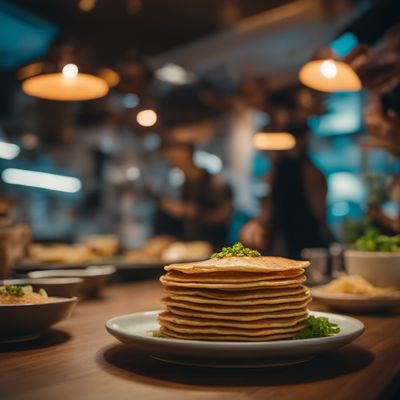
Chamchijeon
Tuna Pancake
Chamchijeon is a Korean dish made with canned tuna that is mixed with flour and egg and pan-fried.

Yeot
Yeot is a traditional Korean candy that is sweet, chewy, and made with rice.
More Chinese cuisine dishes » Browse all

Sachima
Sachima is a popular Chinese dessert that is similar to a rice crispy treat. It is a sweet and crispy dessert that is perfect for any occasion.

Hot Pot
Hot Pot is a Chinese dish that is perfect for cold weather. It is a communal dish that is cooked at the table and shared among friends and family.
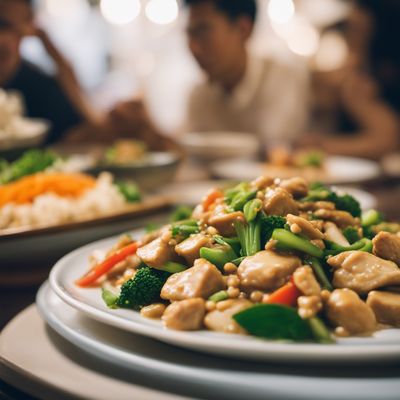
Moo goo gai pan
Moo goo gai pan is a Chinese-American dish made with stir-fried chicken and vegetables. It is a popular dish in Chinese-American cuisine and is...

